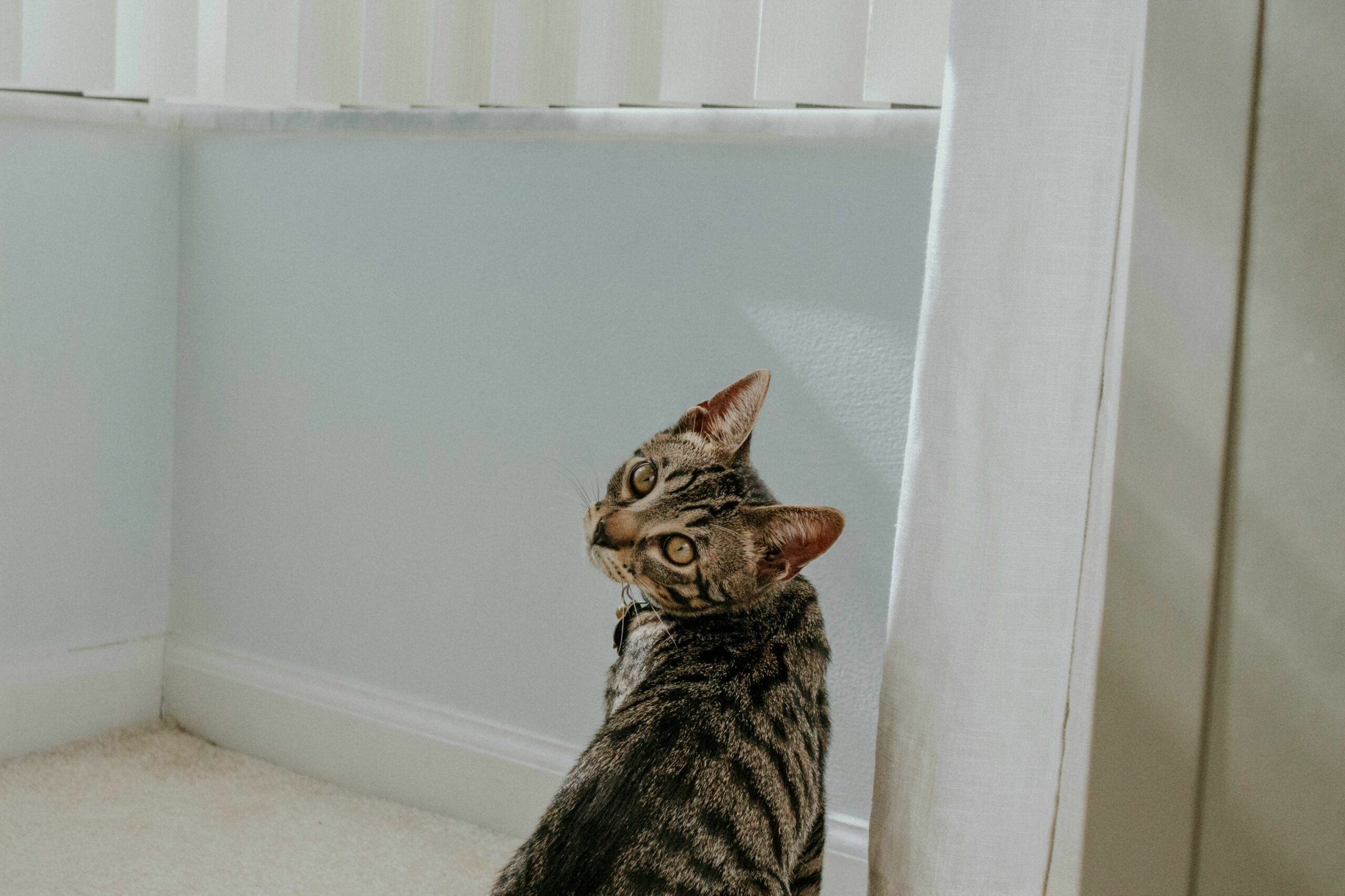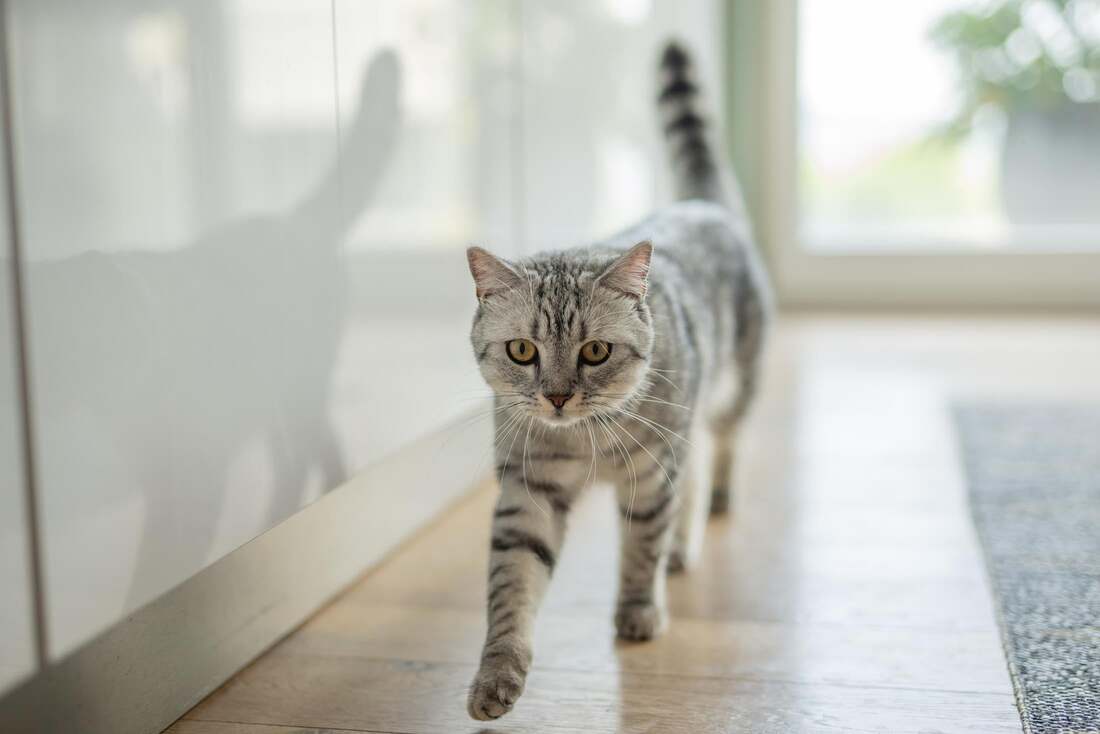Have you ever thought how convenient it would be if your cat could use the toilet? Many cat owners struggle to get their cats used to a litter box, which often leads to frustration and mess.
With the right training kits and step-by-step instructions, you can successfully train your cat to use the litter box.
In this article, you will learn how to choose the right litter box and litter, how to place the litter box optimally, and how to clean it properly to create a comfortable environment for your cat.
Getting the cat used to the litter box

Getting a cat used to a new litter box is an important step in keeping your home clean and your cat happy. It's crucial to take this process gradually and gently introduce your cat to the new environment. Start by placing the new box next to the old one without any pressure, allowing your cat to explore it in their own time.
Positive reinforcement plays a key role in litter box training. Reward your cat with treats, toys or petting when he uses the new box. This builds positive associations and makes the box a pleasant place for your cat. Avoid punishments, as these can only slow down the process and cause your cat unnecessary stress.
Another important aspect is the cleanliness of the old litter box. By gradually cleaning the old litter box less, you will make it less attractive to your cat, which may encourage them to try the new litter box. Remember to be patient, as each cat needs their own time to get used to changes.
Choosing the right litter box and litter
Choosing the right litter box and litter is crucial to keeping your cat comfortable. Cats are very individual in their preferences, so there is no one size fits all. It is important to try different shapes and sizes of litter boxes, as well as different types of litter, to find out what your cat prefers.
Some cats prefer open litter boxes, while others like closed litter boxes that offer more privacy. When it comes to litter, you can also choose between clumping litter and silicate litter, each of which has different advantages. Clumping litter makes cleaning easier, while silicate litter effectively binds odors and absorbs moisture.
Optimal placement of the litter box

The placement of the litter box is very important for your cat's well-being. The ideal place is a quiet, secluded place that offers your cat security while being easily accessible. Avoid placing the litter box next to feeding and sleeping areas or in busy areas, as this could disturb your cat.
It is also important not to move the litter box too often, as this can confuse the cat. Make sure the location you choose is not blocked by closed doors and that it is not near windows or doors where your cat could be observed from outside.
Cleaning and care of the cat litter box

Regularly cleaning the litter box is crucial to maintaining a hygienic environment for your cat and encouraging regular use. Remove solid waste and clumping litter daily, and refill with fresh litter to ensure cleanliness and comfort.
At least once a week, you should give the litter box a thorough cleaning by replacing all the litter and cleaning the box with warm water and a mild detergent. Make sure not to use strong scents or chemicals as these may irritate your cat.
Why Cats May Refuse to Use the Litter Box
Sometimes cats don't use their litter box, and there are a number of reasons for this. A common reason is that the litter box is not placed correctly. Cats prefer a quiet, easily accessible place that provides them with security without making them feel like they are being watched.
Another reason could be the type of litter. Many cats have specific preferences when it comes to the texture and smell of the litter. If you suddenly change the brand or type of litter, it could irritate your cat and cause them to avoid the litter box.
Health issues may also play a role. If a cat is experiencing pain when urinating or defecating, such as with a bladder infection or constipation, it may begin to associate the litter box with these bad experiences and therefore avoid it.
Dealing with mishaps during cat litter box training
If your cat has an accident during training, it is important to remain calm and not punish them. Instead, clean the accident quickly and thoroughly to avoid unpleasant odors and to avoid creating long-term associations with the accident scene.
Put your cat on the litter box regularly, especially after sleeping, eating or playing, to help her understand the routine. Reward her with a treat or toy when she uses the litter box. This will build positive reinforcement that will help her recognize the litter box as a safe and pleasant place.
Understanding the frequency of use of the litter box
The frequency with which a cat uses the litter box can vary depending on factors such as age, diet and activity level. Typically, cats urinate about two to four times per day and defecate once per day. It is important to know your cat's individual pattern to determine if there are any abnormalities that could indicate health problems.
If you notice that your cat is going to the bathroom more or less often than usual, it could be a sign of health problems, such as a urinary tract infection or other medical conditions. Observe your cat's behavior and frequency of bathroom use to make sure everything is OK.
Frequently Asked Questions
Can you teach cats to go to the toilet?
Yes, it is possible to train cats to use the litter box. With the right training kits and step-by-step instructions, you can successfully train your cat to use the litter box.
How do I teach my cat to go to the toilet?
To teach your cat to use the toilet, start with a gradual introduction by placing the new litter box next to the old one without forcing it. Use positive reinforcement such as treats or petting when your cat uses the new litter box. Be sure to gradually clean the old litter box less to make it less attractive and encourage your cat to use the new litter box.
How do I get my outdoor cat used to the litter box?
Getting outdoor cats used to a litter box follows similar principles to indoor cats. Start by placing the litter box in a quiet and safe place. Gradually and without pressure, introduce your cat to the new box and reward it for using it. It is important to be patient and let the cat get used to the box at its own pace.
When do cats learn to go to the toilet?
Cats can learn to use the litter box at different ages. The training process can begin as soon as the cat is in your home. It is important to take the process gradually and gently accustom the cat to the litter box. Each cat has its own pace, so patience is key.





Share:
Understanding Cat Body Language While Lying Down
Ultimate Guide: How to Use a Cat Litter Box Properly